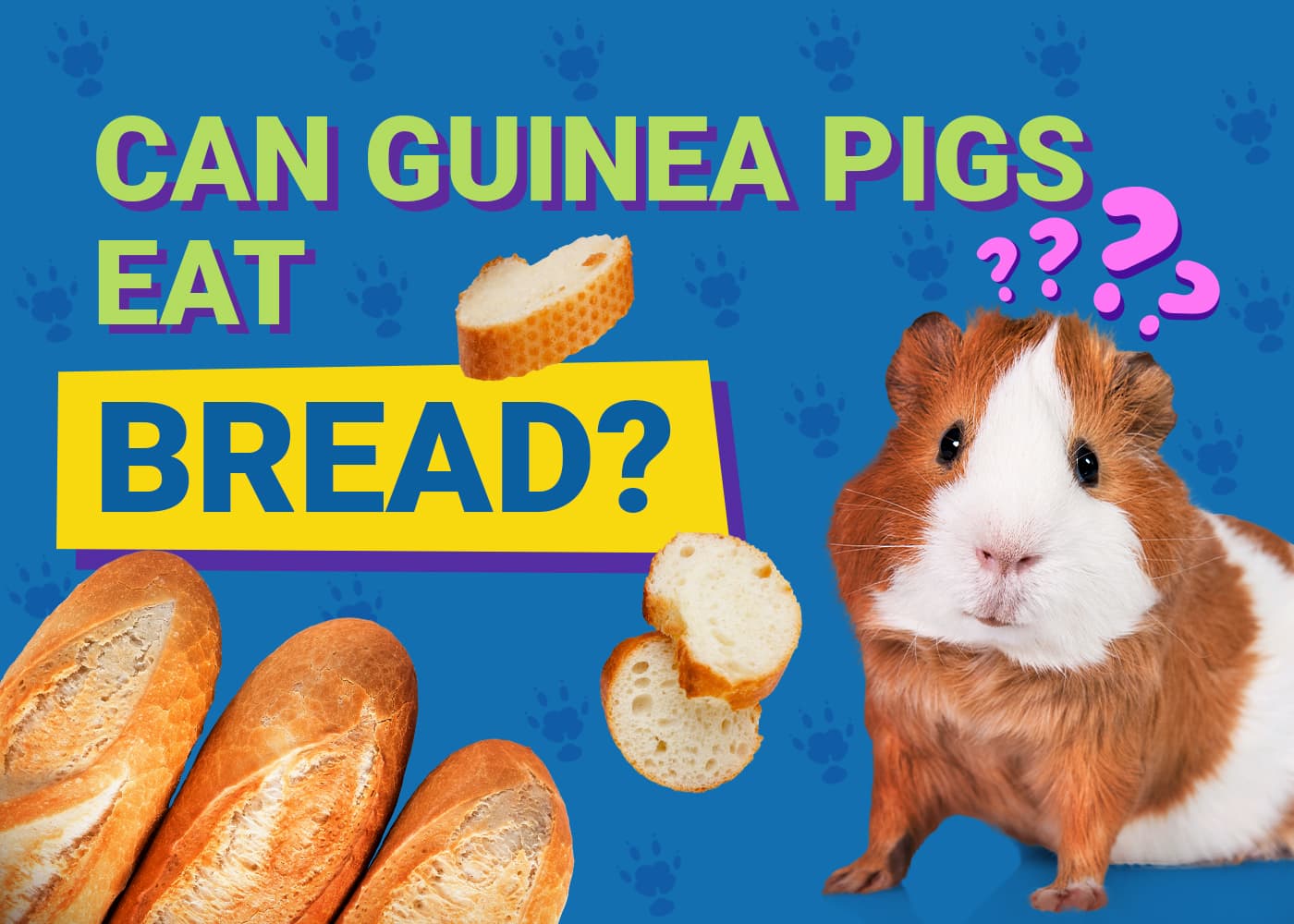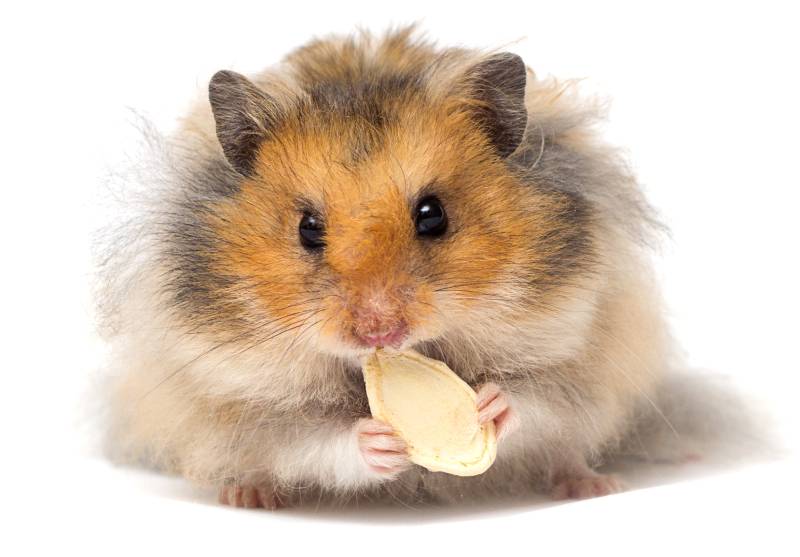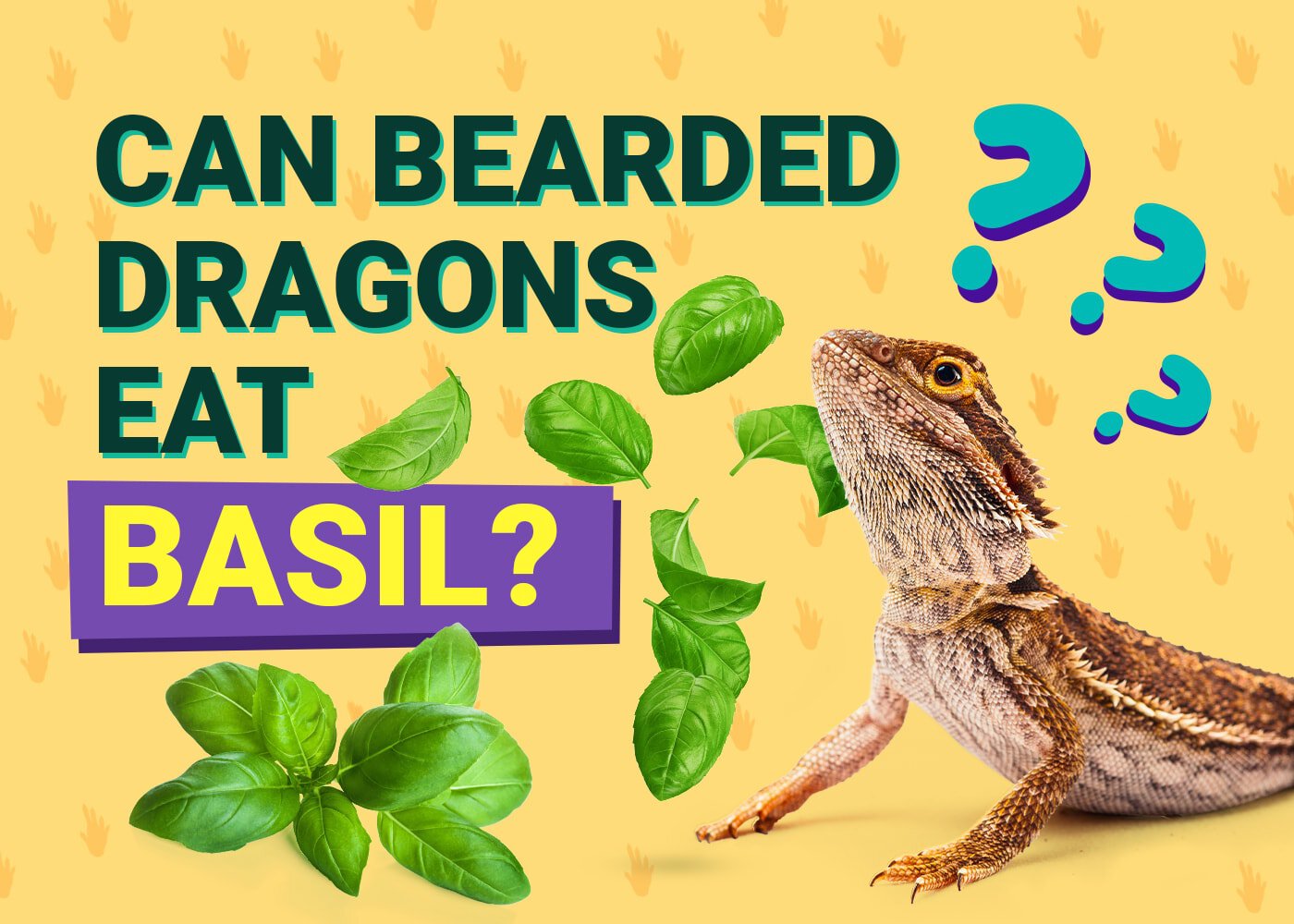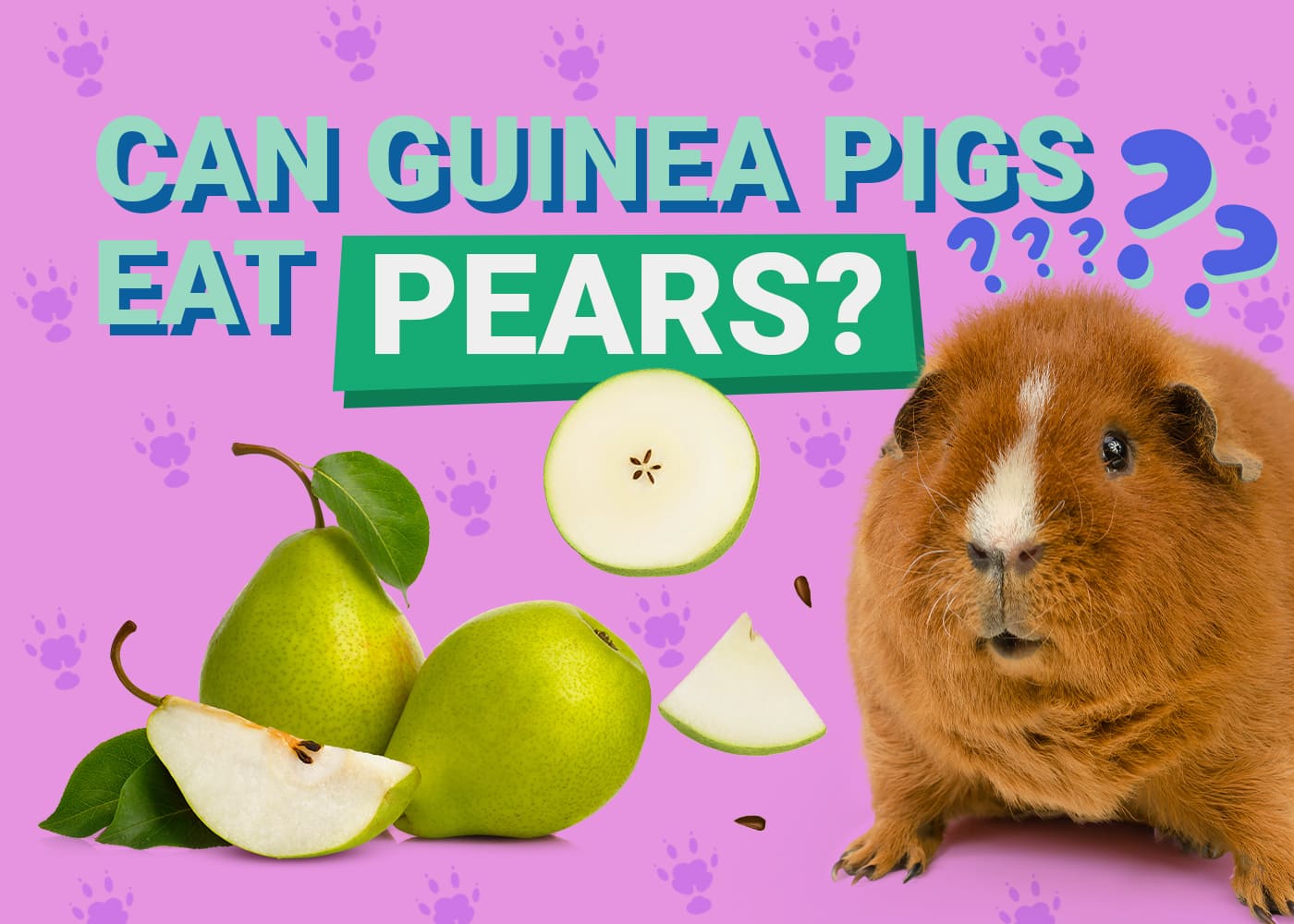VET APPROVED

The information is current and up-to-date in accordance with the latest veterinarian research.
Learn more »Guinea pigs are adorable pets that are popular because of their looks, disposition, and relatively easy care. With proper care, guinea pigs can live 5 years or longer, which starts with the right diet.
Can guinea pigs eat bread? No, guinea pigs should not have bread or other high-starch foods like grains or cereal, which offer little nutritional benefit and may cause digestive upset.

Why Shouldn’t Guinea Pigs Eat Bread?
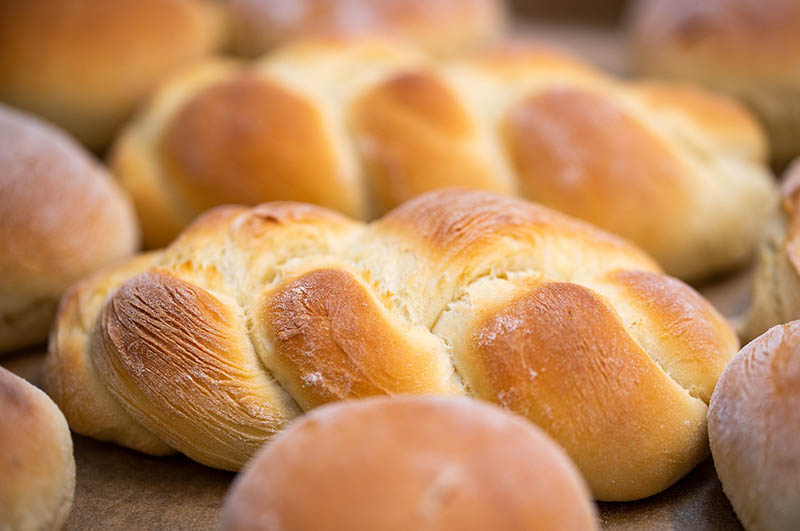
Technically, guinea pigs can eat bread. It’s not toxic or poisonous to them. However, bread has virtually no nutritional benefits for guinea pigs and acts more as a “junk food” than a necessary part of their diets.
There are numerous types of bread with different nutritional qualities, but generally, it’s just flour and water. The small amount of fiber or vitamins and minerals in whole wheat or other less-processed bread varieties isn’t enough to outweigh the calorie and starch content.
In fact, it can cause the following adverse reactions:
- Digestive upset: Bread is difficult for guinea pigs to digest. Though humans can digest bread and starches well, guinea pigs don’t digest it easily. Giving your cavy bread can cause constipation, bloating, gas, diarrhea, or pain.
- Choking hazard: Bread is soft and can get stuck in your guinea pig’s throat, causing a choking hazard.
- Dental Problems: Guinea pigs’ teeth grow constantly and must be worn down by chewing on tough, fibrous hay and grass.
- Obesity: Guinea pigs need to maintain a good weight for their health. Bread has sugar and calories, which can contribute to obesity in your guinea pig.
This applies to all types of bread, including bread sticks, bread crusts, and other types. There are plenty of other foods you can feed your guinea pig to support a healthy diet.
What Do Guinea Pigs Eat?
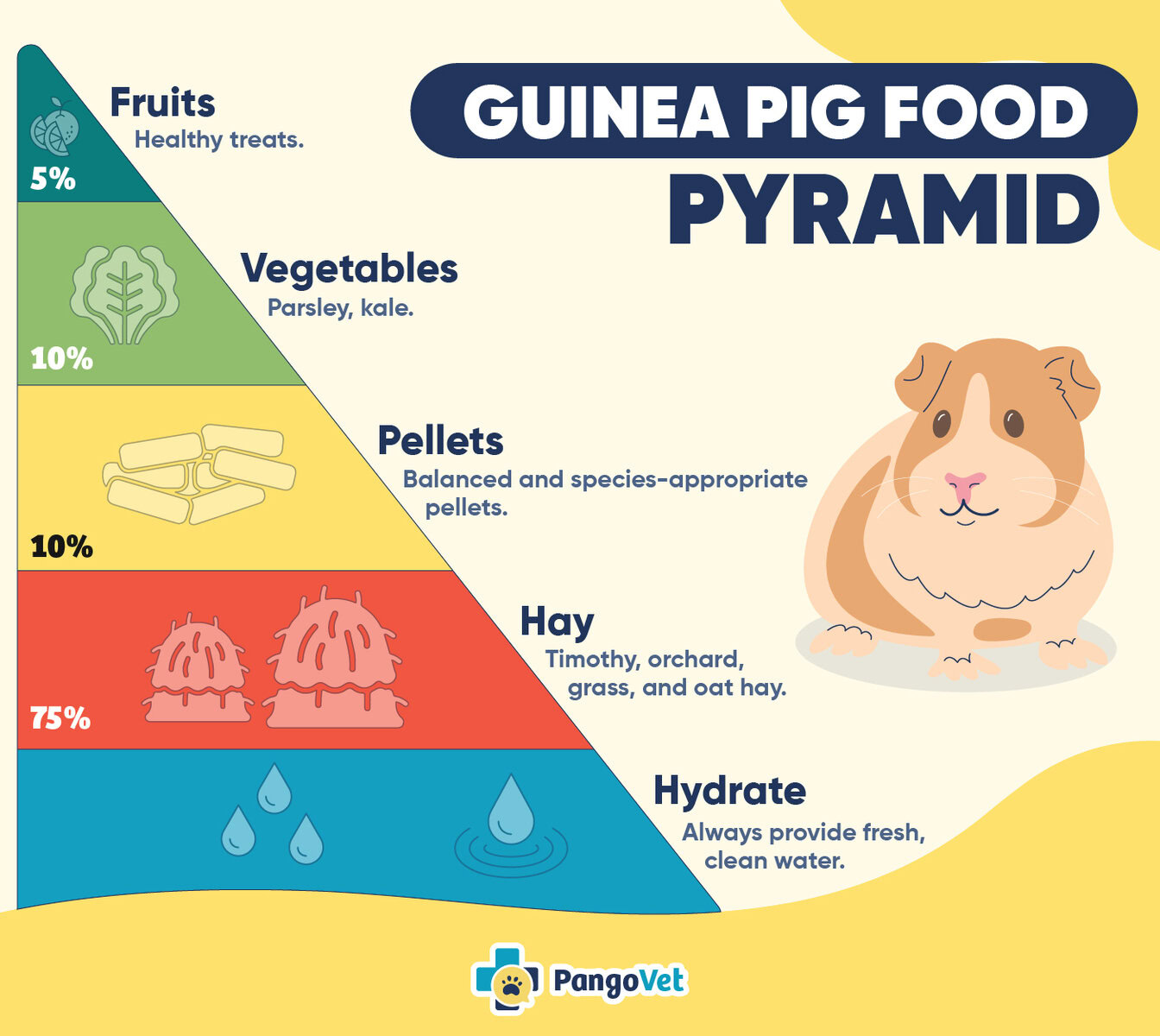
Guinea pigs have a high metabolic rate and must eat most of the time. They are strict herbivores and shouldn’t consume any animal protein. As herbivores, guinea pigs do well on grass and hay, which are the primary components of the diet, as well as some fruits and vegetables. Timothy and orchard hay work well, but they can also have meadow, oat, or brome hay. Alfalfa and clover hay should only be served to pregnant or juvenile guinea pigs due to their high calorie and calcium content.
It is recommended that guinea pigs eat 85% to 90% good-quality feeding hay and a small amount of guinea pig pellets. They can have a variety of fresh fruits and vegetables, amounting to no more than 1 cup per day. Keeping a large portion of hay in the enclosure at all times helps them get the nutrition they need and prevents digestive or dental problems. The grass wears down their ever-growing teeth, and the roughage keeps their digestive tracts moving as they should.
After hay, guinea pigs should eat vegetables like romaine lettuce, parsley, celery, tomatoes, carrots, green beans and dandelion greens. They can have a variety, but it’s essential to introduce new vegetables in small portions to prevent digestive issues. If you choose to feed commercial pellets, it’s important to do so in limited quantities. You can add grass pellets to enrich the diet, but they shouldn’t replace free-choice hay. Pellets shouldn’t have seeds, nuts, or fruits.
Treats and fruits can be fed sparingly, as in a couple times a week. Treats may be high in sugar, which can upset the guinea pig’s delicate digestive system. Fruits are also high in sugar and may cause gas. Safe fruits for guinea pigs include apples (not the core), pineapple, kiwifruit, berries, and cantaloupe. However, they should only be served occasionally in small portions.
Guinea pigs are prone to chelitis, which is the inflammation of the lips, and acidic fruits may worsen the condition. Guinea pigs also need a source of vitamin C. Unlike dogs and cats, they can’t manufacture their own vitamin C and need to get it from their diet. Without it, they can get scurvy and other problems. That is why pellet feeds should be specific for guinea pigs, as rabbit pellets are not suitable.
Of course, guinea pigs should always have access to fresh, clean water. A sipper bottle attached to the cage is ideal.
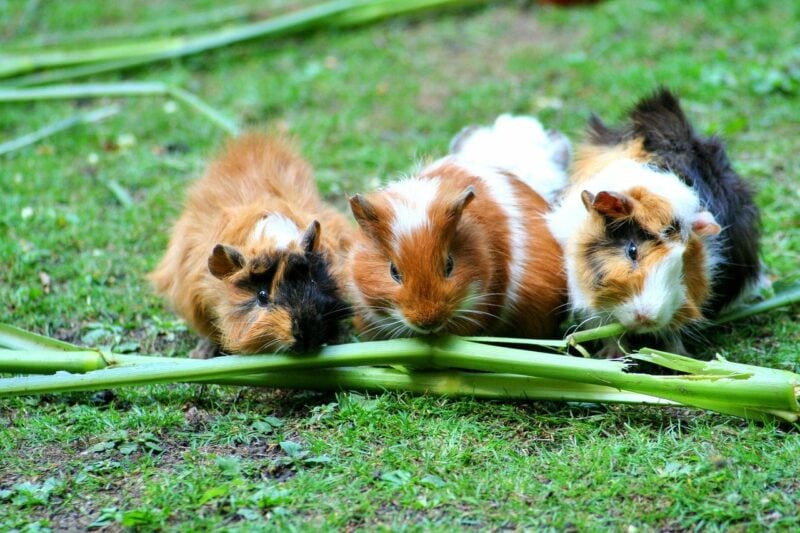
What Can Guinea Pigs Not Eat?
Along with bread, there are several foods that guinea pigs should never have. Whether they’re toxic or cause excessive gas and bloating, it’s best to err on the side of caution.
- Meat and animal products
- Pellets or commercial food intended for animals other than guinea pigs
- Multivitamins
- Nuts, seeds, and dried fruits
- Spoiled human foods
- Mushrooms, potatoes, avocado and iceberg lettuce
- High-starch foods like cake, beans, bread, and grains
- High oxalate greens like spinach, kale, collards, and chard
- Cruciferous vegetables, including collards, cabbage, Bok choy, and broccoli
- Commercial treats like yogurt drops have excessive fat and sugar that can lead to obesity and other issues
Conclusion
Guinea pigs are voracious eaters, but as a pet owner, it is vital to maintain a healthy diet. Guinea pigs must primarily eat hay and vegetables but never bread, crackers, or other starchy foods. Although they can eat pellets, they shouldn’t eat formulas designed for other animals, such as rabbits.
